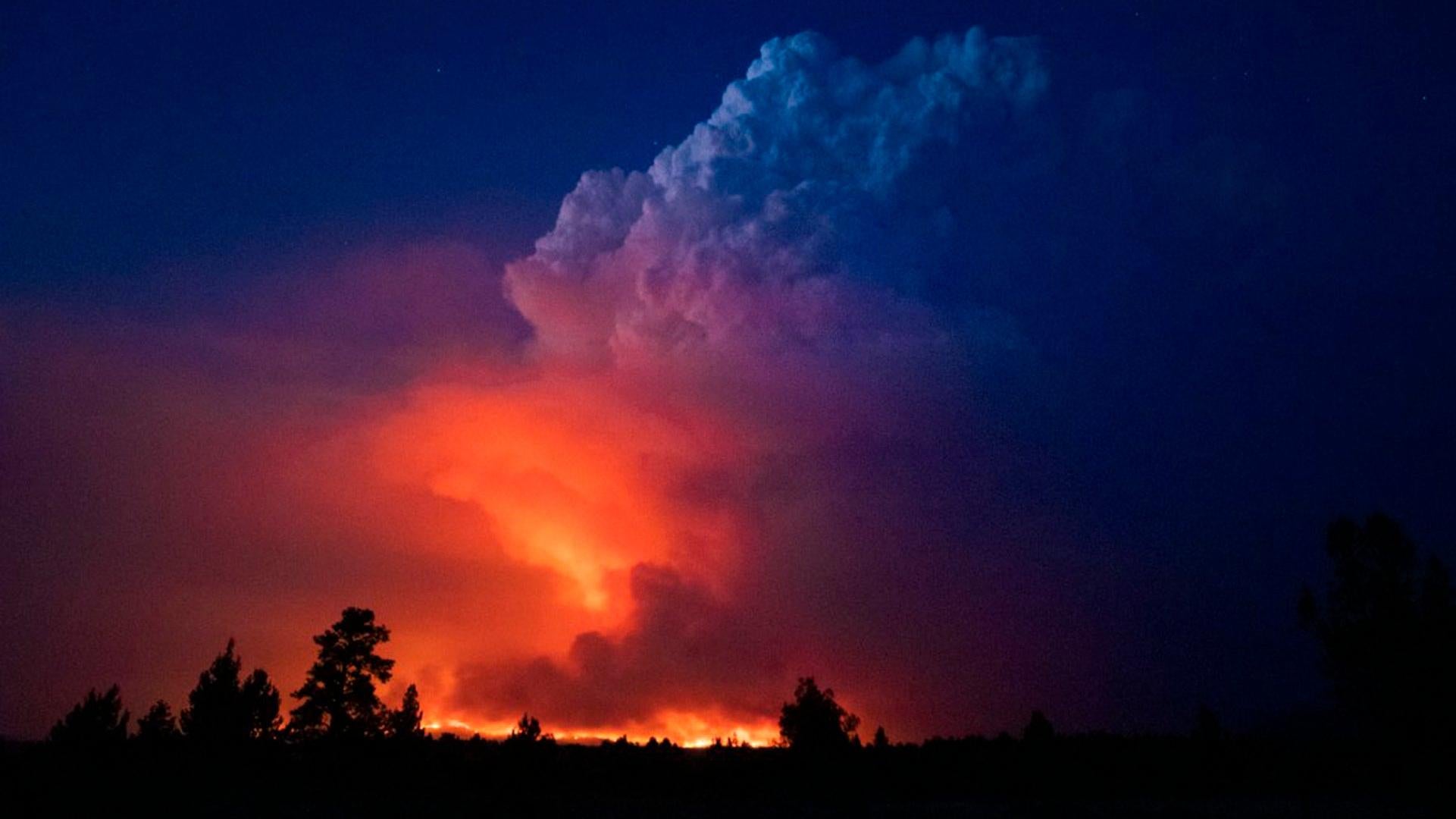The West’s nightmare summer continues to grow worse. The Bootleg Fire in southern Oregon is the largest in the U.S. and has now overrun more than 300,000 acres. Yet as the fire rages out of control, more dire news is on the horizon: The Forest Service’s budget and firefighting resources are expected to be tapped out even before the peak of fire season.
The Bootleg Fire began in early July, right after the record heat wave cooked the Northwest to a well-done crisp. The heat dried out vegetation that was already under drought stress, which allowed the fire to spread rapidly. It currently burned an area the size of Los Angeles, and it will almost certainly grow on Monday. “Critical fire weather conditions including gusty southwest winds and low relative humidity are expected Monday afternoon,” according to Inciweb, a federal wildfire database. A red flag warning has been issued by the National Weather Service.
“Gather your fire evacuation kit now,” the agency wrote in the warning, underscoring the danger of more fires starting in the area.
NWS has also issued an air quality alert for areas to the east of the fire, downwind of the smoke. The Bootleg Fire is hardly the only blaze to worry about. The interior of the Pacific Northwest as well as the Northern Rockies are covered in a purple and red bruise of fire and heat warnings.
The region is in the midst of a heat wave—yes, another oner—that’s expected to peak today. Along with triple-digit temperatures, gusty winds and low humidity rile up any of the dozens of large fires across Idaho, Montana, Oregon, and Washington. Any new fires that spark in those states are also likely to spread. Oh, and lightning is expected in California’s Sierra Nevadas today, which could ignite other fires as well.
The climate change era was always going to be a test of our ability to fight fires. Hotter weather allows more fires to ignite and spread, and erratic and dangerous fire behavior has become increasingly common. At the same time, decades of forest mismanagement and fire suppression have left the West choked with fuel.
The early results of battling fires in the age of explosive blazes are a reminder there’s a lot of work to do from a budget and resource perspective as well as reducing the risks of large fires. On Wednesday, Forest Service Chief Victoria Christiansen sent a letter to staff outlining the dire set of circumstances the main firefighting agency faces. Among the most harrowing passages in the letter is the following (emphasis added):
“We are seeing severe fire behavior that resists control efforts. Further, the seasonal forecast for the entire Western United States remains extremes for the next several months. We expect demand for resources to outpace resource availability, and our workforce remains fatigued and in need of recovery following last year’s record-setting fire season, active hurricane season, and strenous efforts to respond to the COVID-19 pandemic.”
In an effort to help ease the strain, Christiansen outlined a plan to allow those with expired firefighting certificates to be reinstated for the summer, provided they pass medical and fitness tests. She also announced all efforts will be made across the agency to “prioritize fire management,” indicating how serious this summer is shaping up to be.
“Both incoming Chief Randy Moore [Biden’s pick to run the agency] and I agree: This shift in direction is necessary at this time to allow us to respond to the enormity of the national wildfire crisis we all face.”
These changes could help stave an all-out firestorm from overruning the West, but the toll it’s taking on firefighters is severe. Thomson Reuters Foundation reported that morale among firefighters is extremely low.
“Every year for the last five years it’s getting worse and worse,” Donovan Lee, a 22-year veteran firefighter who quit last year, told the foundation. “You make more money at McDonald’s.”
Firefighters are currently paid just $13 per hour, which President Joe Biden called “ridiculously low.” He wants to raise it to $15 per hour, which is good, but also have you seen the fires out West lately? Other proposals have called for a $20,000 annual raise. At the state level, California officials have also tried to help ensure incarcerated firefighters are able to pursue job opportunities in the industry after being released. At the same time that the government is gearing up to fight fires, though, it also needs to be gearing up to reduce emissions and prepare forests for the future so the blazes don’t get as bad in the first place.














